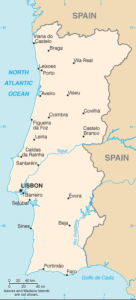For the past two weeks, Portugal has experienced one of the largest Legionnaires’ disease outbreak in Europe’s history with 336 cases and 10 deaths, according to an RTE report today.

Portugal Health Minister, Paulo Macedo said the following during a news conference: “The source of the outbreak has been eliminated and we can declare that it has been put out.”
The 10 fatalities reported by the Irish news source is 2 higher than the latest report by the European Centre for Disease Prevention and Control (ECDC) updated Nov. 20. The 10 fatalities are broken down as follows: Seven men and three women ages 59-89.
The outbreak has been linked to cooling towers at the fertilizer factory Adubos de Portugal.
An investigation is underway to determine if negligence had been committed.
Legionnaires’ disease is caused by a type of bacteria called Legionella. The Legionella bacteria are found naturally in the environment, usually in water. The bacteria grow best in warm water, like the kind found inhot tubs, cooling towers, hot water tanks, large plumbing systems and decorative fountains.
People get Legionnaires’ disease when they breathe in a mist or vapor (small droplets of water in the air) containing the bacteria.
For more infectious disease news and information, visit and “like” the Infectious Disease News Facebook page


One thought on “Portugal Health Minister on Legionnaires’ outbreak: ‘The source of the outbreak has been eliminated’”